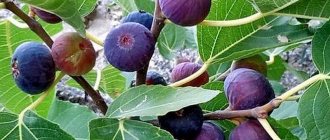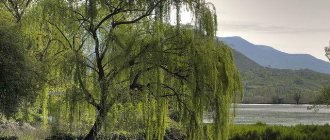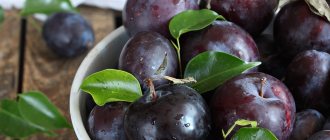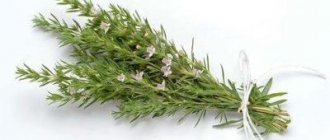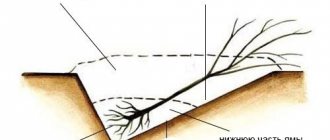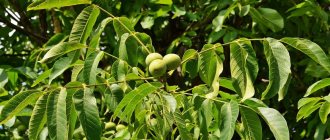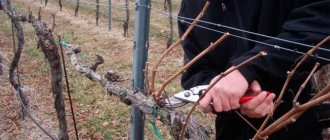Trunk plants are one of the most spectacular forms of garden plantings.
They have a straight trunk, like a cane stuck into the ground, and on top there is a cascade of flowing branches or a thick leafy ball-cap.
The most beautiful part of the trunks - unusual in shape, flowering, decorative foliage - is, as it were, raised above the ground, highlighted and presented to the viewer, like a bouquet on a high stand. Of course, this form is man-made, artificially created. It is achieved either by grafting a decorative crown (weeping, spherical, twisted) onto a smooth tree trunk (standard) devoid of side branches, or by special cutting. The height of the trunks ranges from 1 to 5 m, most often it is 1.8-2.5 m.
Standard plants are beautiful at any time of the year. In spring, their branches are dressed with flowers (weeping rowan , apple tree or goat willow ). In summer, growing young shoots cover the tree with thick greenery and fruits, and standard roses and viburnum bloom at this time. In autumn, before the leaves fall, the crown is colored in yellow and red tones. In winter, the pattern of cascading or twisting branches is clearly visible, and the dense domes of spherical shapes under the snow tiara turn into modernist sculptures.
In addition, standard plants allow you to visually save space, since their crown is compact. It is much easier to process tree trunk circles under them. And it is convenient to harvest from berry bushes grafted onto a trunk without bowing to the lower branches.
Weeping forms are the most common among standard plants. In addition to mountain ash, goat willow and apple trees, caragana (yellow acacia), elm, larch and ash also have varieties with hanging shoots. The drooping form of ash with ordinary pinnate leaves and the single-leaved weeping form are known.
Trees and shrubs with such shoots have been found in the wild or artificially bred. Grafted into the lower part of a rootstock, they produce seedlings with creeping branches, and grafting onto a high trunk forms a drooping crown.
There are four degrees of drooping branches: reflex - shoots grow almost vertically downwards, like a weeping elm; inverse - shoots hang down in an arc; the weeping form itself, or pendula - the bulk of the branches are directed downward at an angle of 30-60 degrees, like the weeping rowan, and the umbrella form - the shoots are curved, a significant part of them are directed horizontally or obliquely upward, like the umbrella form of an apple tree.
Creeping forms of junipers , cypress and cotoneaster also form crowns close to weeping. Climbing roses, grafted onto a standard, turn into weeping roses.
All weeping forms are characterized by powerful growth of shoots directed downward; for example, in mountain ash, the length of annual growth can reach 2.5 m or more. The spherical shapes are no less interesting. Spherical maples are familiar to everyone: on a 2-3-meter trunk there is a thick cap of shoots, with a diameter of an adult tree of 2-2.5 m, and sometimes more. The spherical form is found in ash, white acacia , larch , willow and thuja : propagated by cuttings or grafted into the lower part of the trunk, they form a ball or dome lying on the ground.
Standard spherical forms are most often used in symmetrical plantings around buildings, in alleys and along fences. They look especially impressive in combination with pyramidal trees and shrubs.
Compact forms of mountain and black pine , spruce , almond , and viburnum are sometimes grafted onto the trunks, causing familiar plants to acquire an original appearance. Roses and berry bushes grafted onto a trunk change little in shape, continuing to grow as a bush - but raised from the ground by 1.5-2 m.
The standard for grafting is most often a plant of the same botanical genus as the cultivated part. For example, weeping elm is grafted onto rough or smooth elm, weeping pear onto domestic or Ussuri pear, roses onto wild rose, etc. But some plants can be grafted onto the trunks of their “distant relatives”, say, pear - onto rowan, hawthorn or serviceberry , Siberian cedar - onto Scots pine. Thanks to this, they not only achieve an external effect, but also obtain some additional properties.
Such seedlings, for example, can begin to bear fruit much earlier than usual ( pear trees already in the second or third year, and Siberian cedar pine produces cones in the fifth or seventh year, and not in the fiftieth year, as in nature). But at the same time, the plants will be less durable. It happens that the grafted part turns out to be thicker than the rootstock and in strong winds even an adult tree can break at the grafting site.
To avoid excessive growth of the scion and prolong its life, 3-5 rowan shoots are left on the pear trunk, for example 10-40 cm below the graft. Their leaves supply the roots with the necessary organic substances that the grafted part does not provide. But such shoots must be kept “in the black body” - their tops must be pinched 2-3 times during the summer, not allowing them to grow, otherwise they will choke the graft. And of course, for such a seedling you need to choose only a place protected from the wind. And immediately after planting, be sure to tie it to three pegs above the grafting site.
Plants on a trunk can be obtained not only by grafting, but also by pruning all lateral branches to a certain height. This formation of plants is carried out gradually, year after year, and not all at once.
Let’s say that hawthorn, ash, linden, and robinia can be grown both as multi-stemmed and standard woody plants. It is interesting that such typical shrubs as currants , gooseberries , red viburnum, Buldenezh, Hungarian lilac and others can be formed into a single-trunk standard tree, which greatly decorates the site.
Plants that produce shoots on their roots or actively grow from the ground (common lilac, mock orange) are more difficult to care for, but they can also be grown in a similar form.
Mini-standard trees in the garden: the brightest standard trees, shrubs and vines.
Trees and shrubs are the pride of every gardener. After all, powerful, lush, voluminous crowns testify not only to skill, but also to foresight in the approach to the design of your favorite area. True, only those who have unlimited garden space can afford to fill the garden with large groups of these magnificent plants and use them in almost every object in the garden as accents. And huge crowns are not always appropriate, because they make the garden optically even smaller. An excellent alternative to traditional forms and outlines is offered by compact standard crops, which, thanks to the floating clouds of the crown on a thin stalk, bring elegance and harmony to any garden composition.
Visually light, seemingly weightless bollards help expand the space rather than narrow it, giving a feeling of spaciousness and sophistication. The most noble and elegant representatives of the trunks are small species, the crown height of which does not exceed 2 meters and which remain compact throughout the entire growing period. These plants are great accents not only for flower beds and front gardens, flowerbeds and mini-beds, but also for terraces and even balconies. Mini-stems usually have a spherical crown with such a dense cushion of greenery that they seem to be truly openwork spheres, although many of them also have more picturesque variations. Miniature standard forms have rightfully earned the title of aristocratic garden plants, but not all of them are ideal examples of restrained solemn classics of the regular style. Many plants classified as mini-standards can boast a bold and modern, colorful and even variegated appearance. In open ground or in tubs, they seem like bold and light final touches to landscape compositions. Let's take a closer look at the best fashionable and delightfully bright representatives of mini-standards. All compact standard forms of evergreens are considered classic - miniature boxwoods, laurels, cypresses, cypresses, thujas, cherry laurel trees, but they look like this only with the strict shape of an ideal ball and the use of varieties with classic colors. Meanwhile, among these mini-standards there are many original plants, variegated and brightly colored varieties that look very unusual, bold and modern. Evergreen mini-trunks are pruned twice a year, at the very beginning of May and then at the beginning of August, not maintaining compactness at all, but striving for the thickest crown possible. Flowering trunks of compact shape can be found among classic garden trees: almonds, serviceberry, ornamental cherries and apple trees, other small representatives of trees look elegant and festive. Even representatives of citrus trees can be turned into mini-standards; the most spectacular of them are lemons and kumquats.
The compact standard form is ideal not only for trees, but also for representatives of spreading large shrubs - such as gentian nightshade, oleander, cassia, and datura. In our country, these crops are classified as exotic, because they cannot overwinter in the open ground in harsh winter conditions, but thanks to their compact size in a miniature standard form, they can easily be grown in a tub culture with shelter for the winter indoors. Such mini-standards, even in old age, will not exceed half a square meter in volume, saving space, but creating a cozy and light openwork shadow. True, trunks formed from large shrubs require considerable care - at a minimum, they will need strong crown-forming pruning twice a year (March and after flowering), regular pruning of branches that are out of the silhouette to maintain the shape, and equally regular watering (preventing the soil from drying out). ) with fertilizers during the summer. A large group of standard mini-plants with a modern appearance are also represented by garden vines grown in unusual shapes. Bougainvillea, jasmine, nightshade and even climbing roses are pruned for this purpose every month, forming a special rounded crown, usually at eye level, and the stems can be intertwined to form an original stem. Growing vines in small standard forms does not differ from the specifics of growing shrubs, except that for tub forms the pots need to be weighed down with stones and windy conditions should be strictly avoided. The smallest trunks represent plants that usually show off in flower beds - subshrubs and shrubby perennials, which can also be grown in the unusual form of mini-trunks. Most often, lavender, myrtle, heliotrope, chrysanthemums, and ground cover varieties of roses are used to create them. These plants should be “served” in the most beautiful containers and elaborate large pots, because they are the main star of small compositions, but when covered for the winter and with a little undergrowth, such trunks will take root well in open ground. Faded inflorescences on boles are removed in the same way as on a regular form, thereby prolonging the usually very spicy flowering of lavender and heliotrope, chrysanthemums and ground cover roses on a small bole. Miniature standard plants look the more fashionable the more carefully they select their accompaniment - the underbrush that hides the soil around the stem. If you want to achieve the most fashionable effect today of bright catchiness, bold and dominant colors, choose a low undergrowth that exactly repeats the color of the flowers and greenery of the soloist herself, preferably also with overlapping shapes of leaves and inflorescences (for example, ageratum will emphasize the beauty of nightshade, a string of lantana, etc. .P.). Where undergrowth is inappropriate, the soil around is covered with decorative mulch - pebbles, gravel, crumbs, aquarium soil. You can also create mini-standards yourself - if you are ready for a long process that requires a lot of patience. To form a trunk, you can use any of the above plants, or rather a specimen with a powerful central stem, of course, straight in shape. It is attached to a support at the growing site (in open ground or in a tub) and all other side stems and shoots are removed over several years, while simultaneously forming a crown using no more than three central branches with regular removal of side shoots and branches directed into the crown. When the stem reaches the desired height, they begin to form the crown - pinching the tops of the shoots up to 4 times per season, as a result of which the remaining 2 - 3 skeletal branches will become more densely branched and powerful.
How to make a standard tree from thuja
Modern science and agriculture make it possible to grow amazing plants that are completely different from those already familiar to us. Thuja on a trunk is no exception, which fits perfectly into the landscapes of gardens, estates and summer cottages.
Is it possible to make thuja on a standard?
Standard varieties of thuja appeared relatively recently. For landscape design, this is a godsend, since the tree fits organically into the designers’ compositions and decorates the planting sites. Considering the high density, and with it the mass of the crown, the trunk must be powerful and have dense wood.
Variety selection
Not every variety of thuja is suitable for stamping. Varieties with weak and gnarled trunks, prone to injury by wind and even heavy rain, are not suitable for this. Therefore, to grow a tree to decorate a park, it is necessary to choose medium and tall varieties with strong roots.
Experts advise choosing varieties of western thuja, for example, Smaragd or Columna , since they are most suitable for creating some kind of large ball on a stand.
How to make a standard tree
After choosing a variety, a standard tree needs to be formed. In the second year after grafting, the seedling is ready for planting in a permanent place of growth.
This should be done according to the following algorithm:
- Grow a plant trunk (this will take 3–4 years) onto which the thuja will be grafted. It is best to choose related ones: cedar, fir, pine.
- Remove all side shoots and tie the stem to the stake.
- In the spring, graft the required variety of thuja onto the rootstock by cutting the bark and introducing a cutting with several buds. It is better to do this in several places along the diameter of the trunk at a small height from each other.
- The established scions will have buds by the fall and should be left alone until spring.
- In the spring, cut the grafted cuttings into several buds to ensure their branching.
Video: Grafting thuja on a trunk
Further care
Coniferous trees are unpretentious, so you don’t need special knowledge and skills to grow even standard plants.
Subsequent care for the new tree consists of the following simple operations:
Treatment
The plant is susceptible to powdery mildew, fruit moth, and green leaf roller. Necrosis of tissues of branches and trunk is also possible.
To prevent this from happening, it is necessary to treat the bush or tree with high-quality fungicides. The following are suitable for this type: “Switch”, “Skor”, “Horus”, “Ordan”, “Maxim”, etc. If there is no experienced specialist nearby, then the required dosage can be determined by finding advice on the Internet or using instructions for the product. When diluting a fungicide, it is worth considering the height of the tree and the thickness of its crown.
The tree is treated with insecticides "Aktara" or "Aktellik". There is no need to rush into re-using insecticides. These chemicals are used only when the May beetle begins to attack, the larvae of which are capable of destroying both the root system and the greenery of a small seedling within 24 hours.
Watering
The plant, due to the dense structure of its crown, greatly evaporates moisture, so this loss must be compensated. Thuja responds well to watering, both in the near-trunk zone and along the projection of the crown. The tree also benefits from drip irrigation, which saturates the branches with water. The types of watering can be varied, and the thuja will delight you with its appearance.
The frequency of watering varies depending on the size of the plant, climatic and landscape features of the area. Branches should not be allowed to dry out, especially in warm, sunny areas. Root watering is needed at least once a week, and sprinkling can be done 1-2 more times during the same period.
Fertilizer
Thuja does not require special care, but in the spring you can help it with future growth. Complex fertilizers are applied, for example, Kemira Universal , which includes all the macro- and microelements necessary for the growth of crops.
In addition to fertilizer, you can mulch the soil near the trunk. The roots of the thuja do not lie very deep, so mulching is done on slightly loosened soil (loosening depth up to 10 cm). Small pieces of coniferous tree bark, compost, and peat are suitable for use as mulch. The layer should be small - 5–7 cm.
A haircut
The formation of the crown of plants in garden design is an important element for visualization, so there is no need to let the trees become overgrown with side shoots. You can cut a tree in different shapes - round, oval, pyramidal and even prismatic.
In order for the plant to maintain the appearance chosen by the owner for a long time, it is necessary to trim the branches twice a year. In the autumn period, sanitary pruning of damaged and old branches is done.
Application in landscape design
Standard thuja is suitable for the most varied and sophisticated landscape design. This tree fits perfectly into residential courtyards and is also suitable for a veranda in a residential building. This plant looks good when planted in an alley, in the center of a square, or in small gardens. It is unpretentious and aesthetically complements groups of other conifers or mixed park compositions.
Thuja grown on a trunk grows quickly and is a good material for planting in a variety of parks. Recently, it has been increasingly used by specialists in the design of gardens and parks. This plant can be used in any elements of compositions both to emphasize severity and to indicate calmness and tranquility.
Horse chestnut: low hybrid and standard forms for the garden.
Chestnuts are one of the largest trees that usually flaunt on city streets, parks and squares. Not everyone can afford to plant such a giant plant in the garden - except perhaps those with large, complexly structured plots, while the beauty of the chestnut and its unusual openwork candle inflorescences captivate many. There is absolutely no need to give up your favorite tree - just choose a reasonable alternative. The fact is that, like most long-known tree crops, horse chestnut has many hybrid forms, many of which are very compact and radically different from their “progenitor”. And horse chestnuts grafted onto a standard tree are so neat that they have a place even in the tiniest garden. Planting such plants is a great chance to diversify the usual vegetation of the garden, bring original foliage into it and realize the dream of your favorite plants that will not cause damage to your garden. And if you have an ethno-corner in the Ukrainian style in your garden, then the new forms of common chestnut will remind you of the magnificent Khreshchatyk and the beautiful streets of Kyiv. Let's take a closer look at the completely unexpected forms of horse chestnut and the peculiarities of growing these small trees.
The common horse chestnut (Aesculus hippocastanum) is a large tree, usually reaching twenty meters in height, with a picturesque crown, five-fingered leaves of a dark green color, changing color to brown in the fall and unique candle inflorescences, which are replaced by large chestnut fruits, so annoying passers-by on city streets. streets. If you look at the chestnuts in parks and squares, this impressive giant representative of the tree seems completely unsuitable for small gardens. But horse chestnut has many species, many of which are quite low-growing. Let's get to know them better. "Induta" is a hybrid of the dwarf horse chestnut (Aesculus mutabilis), which is more appropriately called a shrub than a tree. This is the most luxuriantly flowering type of chestnut, which is literally strewn with loose inflorescences of not ordinary, but rich coral-red color. The height of this chestnut is usually limited to two meters, but the dense crown formed by dark, beautifully drooping leaves on long petioles turns it into a voluminous and massive multi-stemmed plant. During abundant and lush flowering, which usually lasts somewhat longer than large chestnuts, this hybrid can compete with even the most lush ornamental shrubs. The original plant looks great in any composition and will perform well as a soloist. The amazing common horse chestnut variety “Pyramidalis” rightfully earned its name with its unusual, conical crown shape tapering towards the top. The amazing contours of this plant, inherent in it by nature, do not require additional support from a shaping haircut. This deciduous tree is formed by very strong, widely spread branches. It grows very slowly, but you should be prepared for the fact that in 20 years, under favorable conditions, this chestnut may exceed the four-meter mark. But in the first 10 years of its existence, the chestnut will not be higher than 2 meters, which allows it to be used in small gardens. If you do not want it to grow further, resort to radical pruning of the upper branches, which may, however, distort the shape of the crown. In addition, you can graft the chestnut onto a trunk - then it will definitely not grow too high. Its upright candle inflorescences are white with orange speckles. This is an ideal variety for alleys, edging paths, and a row of trees at the edge of the site. The most compact forms of chestnuts are considered to be standard ones, in which ordinary trees are grafted onto low-growing “bases”. It is very difficult to form a standard chestnut on your own and it is better to purchase a ready-made standard from a nursery. Not only varietal chestnuts, but also ordinary chestnuts can be standard. In addition to the two listed hybrids, any other low-growing species can be made standard. The best varieties for standard crops include “Digitata” and “Monstrosa”. Chestnut variety "Digitata" is a small-leaved standard tree with smaller leaves than those of the common horse chestnut, only up to 10 cm in length, creating an openwork crown pattern. In the trunk it is very beautiful precisely because of the lush and dense foliage. In height even without a trunk, this chestnut is usually limited to three meters, but with a trunk it grows even shorter. This unique chestnut blooms in late May - early June, decorated with large, massive white or cream inflorescences. But the “Monstroza” variety differs from the usual type of chestnuts not by its leaves, which are also large, but by short spreading branches that make the winter pattern of branches look like a fancy flower or a shaded ball. The size of both plants when grafted onto a standard depends on the base crop. In addition to the above, the naturally short species of North American chestnuts also attracts attention - horse chestnut pavia with unusual pink flowers and leaves half as large as those of the common horse chestnut with very narrow lobes. It can be grown in regions with harsh winters only when grafted onto a frost-resistant standard. The brightest type of chestnut grows no higher than 3 meters - the meat-red horse chestnut, whose 25-cm panicles are painted in fiery colors. The lowest among the chestnuts is the small-flowered horse chestnut, which in regions with harsh winters does not exceed half a meter in height. It flaunts unusual semi-bronze leaves, a bright yellow autumn outfit and grows not upward, but in breadth thanks to active growth. The inflorescences of this chestnut are very unusual - long, fluffy yellow candles with beautiful pink stamens. This species can be used as a rootstock for tall trees. All chestnuts are quite unpretentious. They grow well in full sun, but can also tolerate shade. These trees, especially in standard form, prefer limestone, moist and loamy soils. Even standard forms are resistant to diseases and pests, but they, unlike ordinary or hybrid chestnuts, need protection for the winter (as, indeed, all standard crops). Chestnuts are absolutely resistant to a polluted urban environment; they can be planted near roads with active traffic. The winter hardiness of all chestnuts increases with age. Hybrid and standard forms of chestnut are quite easy to care for. They need regular watering immediately after planting, when each plant is watered with a bucket of water for the first 5 days. Adults only need watering during drought: if they can cope with a short absence of natural precipitation, then during a longer drought they should be watered actively, pouring 1 bucket of water per square meter of crown projection. Chestnuts are fed twice a year - in early spring and autumn, with organic or mixed fertilizers. When removing weeds, the soil is aerated using deep loosening technology. It is advisable that the tree trunk circle is always mulched with a 10 cm layer of wood shavings, peat or a mixture of compost and peat. It is especially important to mulch standard forms. Formative pruning is not carried out on chestnut trees; it is limited to the sanitary removal of branches that have begun to dry out and cleaning the trunk of shoots. For the winter, young chestnuts in the trunk circle are covered with dry leaves, standard plants are covered with two layers of burlap, protecting the trunk from frost damage. Chestnuts are planted in planting holes according to the size of the rhizomes with a 20-cm drainage layer of crushed stone (brick or other materials are not suitable). The removed soil is replaced with a mixture of high-quality turf soil, sand and humus (2:1:1). About a glass of slaked lime is added directly to the planting hole. The seedling is positioned so that even after the soil shrinks, the root collar is not below ground level. For large chestnuts, the distance to the nearest plants should not be less than 5 meters, for standard and hybrid forms - equal to the diameter of the crown of an adult plant. In landscape design, low types of horse chestnut can be used both as tapeworms and in group plantings. They go perfectly with all types of trees and shrubs, including spring-flowering ones. Plants cannot be planted in the tree trunk circle, but at some distance you can create shady flower beds or clearings from ground covers. Hybrid chestnuts look great against a lawn and can be planted as part of multi-row hedges.
Preparation of the trunk
To vaccinate, you must first select a standard. If there is a ready-made tree on the site, you can give preference to a strong, mature plant. It should be free of diseases and pests.
For grafting, choose 2 identical crops: this way the cuttings take root faster. If it doesn’t work out, they stop at a related option (apple tree and quince, pear and rowan).
Related article:
Unusual plant Elf silver
If there is no ready-made trunk, the tree will have to be planted on the site first. To do this, purchase a healthy seedling, prepare a planting hole for it, install the roots in it and sprinkle it with earth. The trunk is tied to a peg to prevent it from breaking. When growing standard trees, it is important to remove new shoots a year after the third leaf appears.
An important feature of crop care is mulching the tree trunk circle. For this purpose, wood chips, peat, pebbles and wood are used. The mulch layer should be at least 10-12 cm. This feature of trees is due to the fact that their trunk is bare and is often subject to freezing or damage.
Useful information: Practical aspects of summer grafting of stone fruits
Standard roses and other trees - how to form a standard | Country Design - fresh ideas from around the world
An integral element of a charming garden are standard trees. These fluffy balls look great against the backdrop of shorter plantings. At the same time, the trunks do not draw attention to themselves, but only create a fabulous background. Standard forms look like a trunk, cleared of side shoots, on top of which a crown grows like a ball. Outwardly, as the children say, it looks like a lollipop.
You can also find trunks in nature, for example in young birch trees. Where snow-white trunks, due to lack of light, rise into the sky in slender columns and only form a crown at the very top.
3.1. Which shrubs are suitable for forming trunks?
Choose shrubs that can survive pruning without stress. The best choice would be: rhododendron, lilac, hydrangea, viburnum, honeysuckle, dogwood, forsythia.
3.2. How to form a standard
In spring, select the central shoot of a young shrub grown from cuttings. This will be the main trunk, and remove all the buds on the main stem. Leave just a little on the top. Also eliminate the basal shoots from this shoot.
Then, as the stem grows, tie it to a support. When the trunk reaches the required height, cut off the top of the shoot. This will be a signal for the plant to grow in breadth. The crown of the remaining buds will grow to the sides.
Once a month, pinch out all the side branches, this action will make the plant grow even more abundantly. Each type of plant has its own pinching time, but you can use a month as a guide.
Slightly shorten all the branches and your trunk will form quite quickly under your supervision. As a rule, results can be seen already in the second season. Well, starting from the third season, you will have a beautiful standard ball on your site.
3.3. Feeding and pruning
Fertilize after each tree pruning. Feed the plant according to the recommended methods for each type. Regularly remove newly emerging shoots from the trunk and from the root zone.
Remove the support holding the fragile trunk when it can support the thick spherical crown without distortion. According to gardeners, this will happen by the third season.
On my site I am also trying to form several trunks. I’m not ready to show it yet; I’ll have to wait a few more seasons for the results.
Plant species
The height of a standard tree usually does not exceed two meters. But some specimens grow up to 5 m. Properly decorated plants look attractive at any time of the year. Even in winter, when all the leaves fall, the crown retains its spherical shape. It becomes covered with snow, turning the tree into a huge snowflake. And in the summer the first flowers and fruits appear.
In addition to beauty, such plants have other advantages. Standard trees are quite compact; they will not take up much space on the site. A round crown is easier to process and harvesting from it is much simpler.
rose tree trunks
The most common form of trunk is weeping. Usually they try to stylize rowan, elm, goat willow, and some varieties of apple trees.
Such plants were transplanted to the site from the wild or bred artificially.
If you graft a tree at the bottom of the rootstock, the branches will be creeping.
And when working with a tall trunk, you will get a penetrating crown; it comes in four types:
- reflex;
- inverse;
- pendula;
- umbrella.
With a reflex, the shoots grow vertically downward, and with inversion, in an arc. A pendula is a crown shape in which the branches hang at an angle of 60 or 30 degrees. In umbrella trees, the shoots are directed horizontally and rise slightly.
If you form a trunk on shrubs such as cotoneaster or juniper, their crown will be weeping. And thuja, acacia, larch and maple will take the shape of a ball.
Such trees are usually planted along alleys or near buildings to maintain asymmetry. They look good with pyramid-shaped shrubs.
Standard plants: formation of standard plants, care features
The standard shape, given to shrubs with the help of at least five years of pruning and crown formation, can rightfully be considered one of the most striking garden design tools. Every year the popularity of such an unusual, but uniquely perfect form increases, and the prevalence of such plants in gardens of all styles and trends, sizes and regions increases. And this is not surprising, because slender, rounded crowns, like a cloud, rising on a high, even stalk, both in flower beds and in the form of a potted or tub culture, always play the role of the first violin in delightful garden duets.
The elegance and solemnity that standard trees bring to the garden are comparable in their effect only to the strict ideality of trimmed boxwood bushes. The undoubted advantage of standard forms is not only their decorative characteristics, but also their compactness: thanks to the high stem, standard shrubs do not take up much space, which allows them to be used even in very tiny gardens.
The range of standard plants is quite large. Since the formation of a special crown shape takes at least five years, it is easier to purchase them ready-made. This can be done in the nearest garden centers and specialized stores, and the first thing you should pay attention to is the winter hardiness of the plants.
It is important that for outdoor cultivation, you select the type and variety of the desired plant that can withstand the specific conditions of your region. If you plan to grow a standard plant in a tub, then you can worry less about winter hardiness, because such a tree or shrub can always be brought into the house for the winter.
The most beautiful standard plants are considered to be flowering ones, because the spherical crowns strewn with flowers resemble fairy-tale decorations, as if floating in the air. But decorative deciduous shrubs and trees are not inferior to them in sophistication and elegance.
Scion preparation
After 12 months, the trunk already reaches 2 m: such a plant is ready for grafting. Now you can take care of the scion - cuttings. They are prepared in the fall. To do this, young shoots are cut from trees or shrubs (thickness - 1 cm, length - 0.5 m). For the winter, they are wrapped in polyethylene, with pine branches on top, and buried in the ground. This procedure allows you to save energy for further engraftment.
Related article:
Growing magnolia Kobus from seeds: description, features
When choosing shoots, you should pay attention to ensure that they are not damaged or have signs of fungal diseases or pests. If you graft a diseased cutting, the entire tree will subsequently suffer. There should be 3-4 live buds on the shoot.
Standard roses
The most famous standard plants are, of course, roses - from standard flowerbed bushy roses to groundcovers that need additional support from a tall stem. Ground cover or climbing roses from the so-called cascade group, which have unique arched drooping branches, are best suited for forming a standard form.
Depending on which rose was used for formation, you can get both the lowest and neatest and the largest plants, towering above the flower garden or lawn to a height of 2 meters. Climbing roses produce the largest standard crops, quite comparable in size to small deciduous trees.
Caring for standard roses is not so difficult, and cascading roses have an obvious advantage here too - the annual pruning of these plants, instead of almost complete formation with complex procedures, is replaced by selective cutting of two-year-old shoots.
Standard rhododendrons
One of the most striking garden plants is rhododendrons, which amaze the imagination with their lush flowers and impeccable bright image, and in the form of a standard crop these qualities reach the absolute. The magnificent variety of color palette, unique flowering, which almost completely hides the foliage in May, and the slightly flattened shape of the wide crown will not leave anyone indifferent.
If most roses in standard form resemble light, airy clouds, then rhododendrons create heavy “clouds” on a green base of leaves - massive, strikingly elegant and luxuriously voluminous. Thanks to the specific branching, rhododendrons never look like an ideal sphere, but impeccable flowering is more than that compensates.
Standard rhododendrons have to be constantly protected not only from bright rays (the bark of these shrubs is sensitive to the sun) or heavy rains by shaking off water from the branches, but also in winter - from the scorching sun and too heavy snow.
The best species for growing as a standard crop are Yasiman rhododendrons and all hybrids based on them.
Hawthorn and witch hazel
Less whimsical, but no less colorful images are offered by another flowering shrub - hawthorn. Forming a smaller-leaved crown, hawthorn can boast a spectacular floral arrangement and more diverse variations in crown shapes: the undemanding shrub tolerates pruning much more easily and lends itself to strict shaping.
In the southern regions, an original standard tree can be obtained from winter-blooming witch hazel, which is very beautiful in the fall with its red or yellow foliage.
Deciduous and coniferous
Among the plants with beautiful foliage, the standard form is most often given to the unpretentious holly with fancy light patterns on the leaves, the delightful golden cypress and the noble laurel, which has grey-green, larger, classically elongated foliage. The latter, however, is only suitable for growing as a tub crop, because it is very sensitive to cold.
Conifers, which are most suitable for creating flawless spheres on a stem, look best next to other conifers that have a contrasting green color (for example, the golden balls of cypress look good against the backdrop of clipped yew hedges). Being evergreen plants, such standard trees can not only serve as the main decoration of a flower garden, but also skillfully place accents and fill the garden with bright images all year round.
Fortune's euonymus will also sound original and new in the form of a standard plant with its unique small foliage and two-color leaves with a lighter border. Euonymus, which was formed in the form of a standard tree, usually does not exceed 50 centimeters in height, which does not prevent them from attracting everyone's attention with a dense crown ball with very compact dimensions and an unusually variegated color. Euonymus looks very good in a duet with bulbous plants, without suppressing them, but only emphasizing the splendor of the flower carpet.
If you want to form a standard crop from a plant already growing on your site, then be sure to purchase a special wire frame for such forcing: it is impossible to give an ideal shape to a shrub or tree by eye. Place such a frame-sphere on an untrimmed tree, evenly distributing the branches. Any excess that protrudes beyond the shape is cut off first with large scissors (large branches), and then with small scissors (the smallest remaining branches).
Caring for standard shrubs
Caring for standard shrubs is very specific. Due to the fact that the central stem of a standard plant is bare, and the crown is located at a considerable distance from the soil surface, almost all crops formed in such a specific way are very sensitive to cold and temperature changes, which is even more important for potted and tub-shaped standard plants.
As autumn approaches, all fertilizing containing nitrogen fertilizers should be stopped so that the plant has time to enter the dormant period. If, from mid-August, you gradually prepare the plant for the cold period, any standard tree will suffer less from winter frosts. But plants such as roses, privet, holly and rhododendrons will still need to be covered for the winter with non-woven material or reed mats, which are tied around the stem.
Particular protection should be provided at the grafting site, which is most often located directly under the crown. The grafting site is easy to find on the trunk - it is a small but noticeable thickening.
Standard plants: four main rules for formation and care
We form the crown gradually: every three to six weeks the shoots are shortened, because of this new branches will grow. Perfection of form is one of the main characteristics of true beauty. This statement is also true in the issue of site design. The standard form of shrubs is gaining more and more popularity: there is probably not a gardener today who would not like to see this innovation on his site.
Judge for yourself - an exquisite plant, full of triumph and natural elegance, with a rounded shape on a thin stem. Such beauty will delight the eye of both the owner of the site and his guests. Four rules for creating standard plants and caring for them are given below.
The shoots need to be pruned until the tree has grown sufficiently and its trunk has become sufficiently thick
Rule 1. With or without grafting - we listen to experienced gardeners
The process of forming a standard plant is a rather labor-intensive process. Typically, it will take a gardener five years to achieve the desired result. How to do this with vaccination?
The algorithm is not that complicated:
The first step is to grow the standard, meaning the tree trunk itself. This can be either a native column or taken from a taller plant. After two years, the desired plant can be grafted onto this standard post. Creeping shrubs are often grafted onto a standard tree to create unusual, beautiful weeping forms.
Grafting onto a standard forming agent is an interesting and simple method. The trees obtained as a result of this method will decorate any garden and will be beautiful and healthy.
The top of the shoot needs to be trimmed only when the desired height of the tree has been reached.
The sun will fall better on the crown, and good lighting, as is known, prevents many plant diseases.
However, you can do without vaccination. In this case, correct formative pruning will help out. We grow the trunk again, having previously selected one central shoot (you can have two, of course, or even three braided). Excess branches will be gradually trimmed off regularly. This is done more than once a year, and the standard we need will be formed in more than one year. If necessary, the stem is tied to the support. The crown is formed using pinching. This means the tops of the shoots are pinched.
Some gardeners form a standard plant from an existing adult bush. The method is simple - all excess is cut off. But you need to do this if you don’t feel sorry for the bush at all, because the first experience may not be so successful. This tree is quite interesting.
Consider the second season from grafting - at this time you will receive an already formed standard seedling
The main points of grafting
What rules must be followed in order to grow a beautiful standard tree that is pleasing to the eye and harmoniously fits into the design? Here's a quick step-by-step guide:
- Grow the base (or standard). The young seedling is tied to a support and allowed to develop to a certain height.
- Take a healthy cutting with two to four living buds.
- Make an oblique cut above the upper bud of the cutting (scion), and in the lower part, using two cuts, create something like a wedge.
- Using a pointed section (wedge), carefully insert the scion into the trunk so as not to damage the latter.
- Treat the junction area with garden varnish and tie it with a plastic bandage or electrical tape, which can be replaced with new ones over time, and after a year completely removed.
- After a month, the cutting should take root and new buds will appear on it. Freshly baked shoots will soon form, and as soon as they grow twenty centimeters, they will need to be pinched properly.
Manipulations with vaccinations should be carried out in the spring, in dry sunny weather, so as not to introduce bacteria, fungi or infections into the junction.
What to do if the grafted shoot does not take root? It’s okay, you can try again soon, but it is recommended to do this a year after the unsuccessful vaccination.
Recently, gardeners have begun to use not only standard trees, but also shrubs. What does this actually look like?
